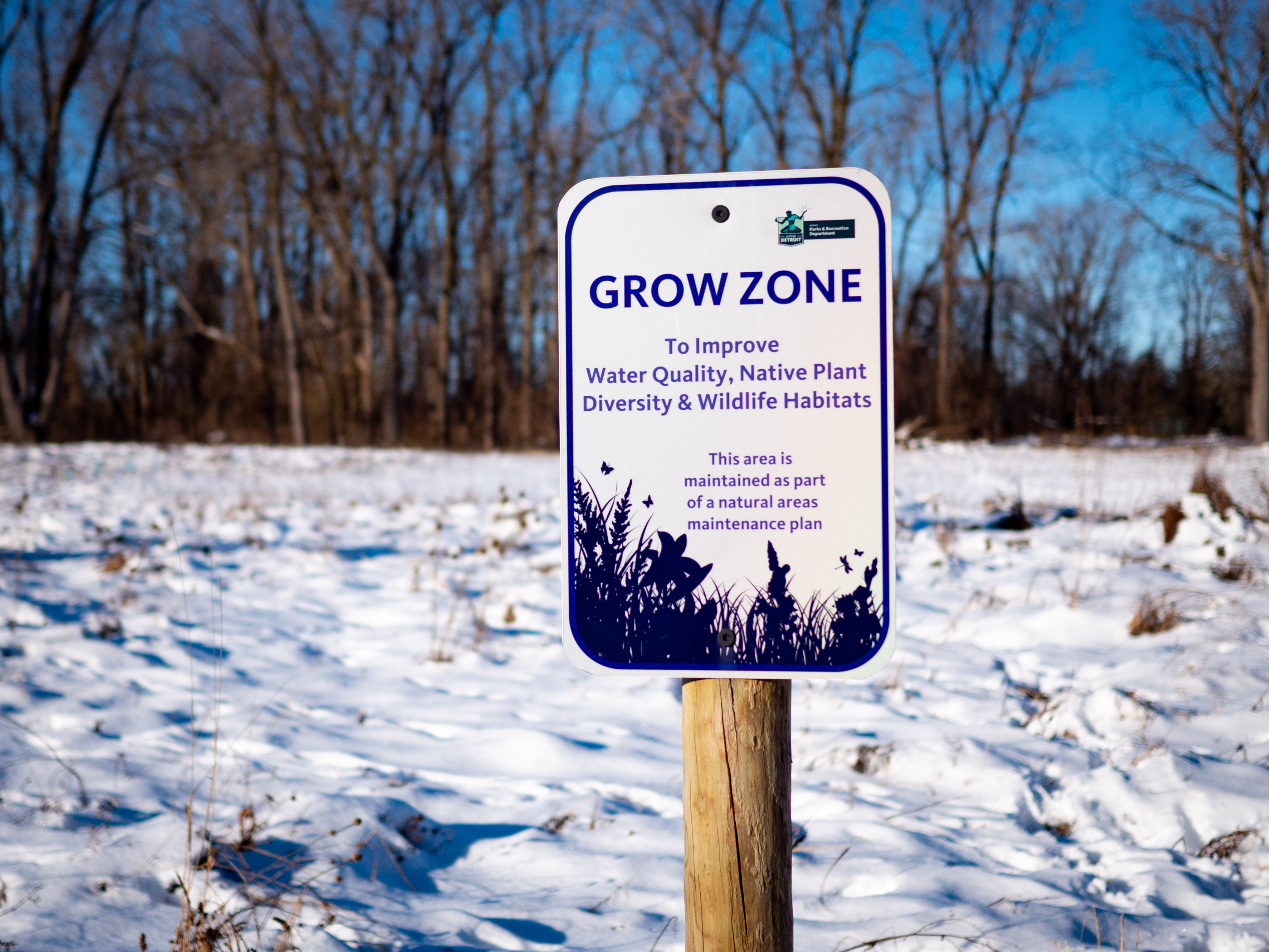When It’s Not Mowed, Then Nature Can Grow
Gallery

Over the past two decades, Detroit’s Eliza Howell Park has found new life through the passion of nature-lovers.
The 250 acre park is Detroit’s fourth largest and is situated in the Brightmoor neighborhood near Telegraph and Fenkell Avenue. The reputation of blight and vacancy that the neighborhood has held for the past several decades has also carried over into Eliza Howell Park. In 2009, developer Kenneth Cheyne filed a lawsuit to regain control of part of the land in the park, some of which was deeded to the city of Detroit by his family in 1936. According to an article published at the time by the Detroit News, he alleged that the city of Detroit had not maintained the land sufficiently, a stipulation to the original gift to the city.
The lawsuit fell through, and since then the park has transformed from a traditional family-oriented park to something else.
Detroit resident, naturalist, and nature writer Leonard Weber has seen this transformation over the past eighteen years that he has been visiting the park. When he first started visiting Eliza Howell, he saw the remnants of the park’s former life.
“The swing sets weren’t safe,” Weber said. “They were broken. Some metal edges that were dangerous for kids.” He further explained that their removal began the transition to “maintaining it more as a nature preserve kind of concept.”
Eliza Howell Park consists of a loop road that provides access to most of the park. For the most part, open land is in the middle of the loop and the wooded areas are on the outside. Visitors can make use of a nature trail that goes into the woods and over the Rouge River, as well as a gravel walking path that follows the road on the inside of the loop.
Much of the criticism that the city faces for not maintaining the park has stemmed from the un-mowed appearance of the open areas. However, the tall grasses that result from a summer of neglect provide important habitat for a variety of species, Weber explained.
With naturalists and bird watchers visiting the park for the wildlife that occurs there, Weber claimed that rather than being neglectful, the city has been very cooperative in managing the open areas. Sometimes they will leave areas to grow, and sometimes they will mow an area that needs a fresh start, mostly at his or other naturalist’s request. This management has helped foster native prairie habitat in part of the park, which in turn helps support a wide variety of flowers, butterflies, birds, insects, and other wildlife. “Basically, they’ve been doing very well,” Weber said. “I think it’s going to be more of a destination place that you can come here for a particular activity,” Weber said. Throughout the winter Sidewalk Detroit has organized the Winter Adventure & Art in Eliza Howell Park.
An unused tennis court has also been converted into a small skatepark.
In cooperation with Detroit Audubon, Weber has been conducting guided nature walks for the past ten years at Eliza Howell Park, pointing out the different plants and animals that he sees on his near-daily walks in the park. According to his blog at elizahowellnaturewalk.com, he saw 117 species of birds and 35 species of butterflies in the park during 2022.
Amateur naturalists are not the only ones taking a closer look at the park. According to WDET, Dr. Nyeema C. Harris is heading a study of the carnivores that frequent Eliza Howell Park and others parks like it in Detroit. Harris and other researchers at Yale’s Applied Wildlife Ecology Lab are monitoring the wildlife through hidden trail cameras, with plans to incorporate GPS collar tracking beginning this year.
Other improvements seem imminent. The loop road is slated to be repaved in 2023. According to Weber, there are also talks of a dog park being installed to cater to the regular dog-walkers. “It’s getting better every year,” Weber said.
Nicholas Hinnant is a photographer and nature writer in the metro Detroit area. He is pursuing an Environmental Studies Associate of Science degree at Henry Ford College and maintains a blog at http://www.michiganwilds.com
Bluebird photo by Nicholas Hinnat
Robin photo by Nicholas Hinnat
